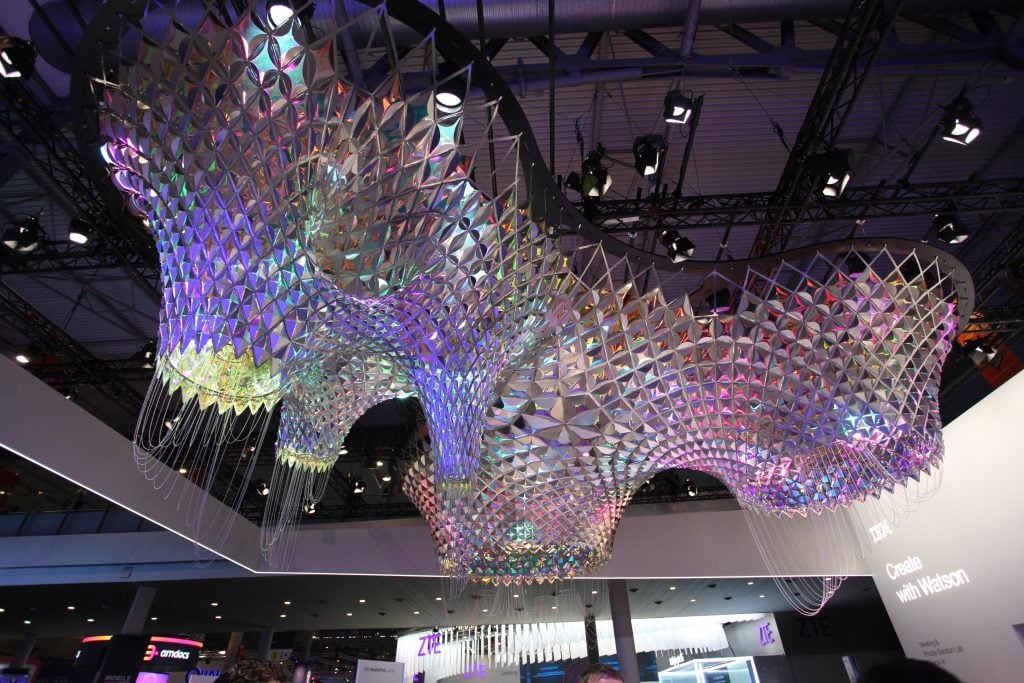SXSW: When combining AI and design, computers need to get moody
ArtandSeek.net March 11, 2017 25Art&Seek is back in Austin at South by Southwest (SXSW) this week, and KERA’s Alan Melson is among those sharing dispatches from the annual conference of interactive, film and music.
In past years, South by Southwest Interactive has been a place where new technologies emerged with a splash, garnering worldwide attention before beginning their inexorable slide towards ubiquity. In 2007, it was Twitter; subsequent SXSW installments saw buzz-filled rollouts of new apps, 3D printing and connected wearables, among other trends.
On Friday, the conference’s recurring themes bubbling up during panel discussions and lectures grew a little more abstract, delving into the strange and vaguely unsettling worlds of artificial intelligence (AI) and machine learning. Visions of HAL, Skynet and other computer systems becoming self-aware and running amok are easy tropes to fall back on, but reality is more complex – if only slightly less threatening. AI has many potential applications, and at least a few of them raise procedural or ethical questions, which panel after panel tried to address.

IBM’s Watson supercomputer created this Gaudi-inspired sculpture after researchers fed it tons of data about Gaudi, his work and the context around it. (IBM)
One of the bright spots was a presentation by two researchers focused on the nexus of design and AI. For decades, we’ve used computers to make objects – furniture, textiles, even sculpture – using a specific set of instructions. Now, we’re using apps that turn our photos into art using a pre-determined set of parameters (Prism) and software that opens up a world of functionality to enhance our art (Photoshop, Illustrator). Last month, IBM’s Watson supercomputer even created its own sculpture inspired by the work of Gaudi, using thousands of examples of his work to establish boundaries for form and style.
However, Jason Robinson of design consultancy IDEO and Philippa (Pip) Mothersill of MIT’s Media Lab feel we haven’t yet figured out how to get machines to truly harness our creativity and emotion, despite the fact that technology is advancing to the point where that may be possible. In their session “Humans, Machines and the Future of Industrial Design,” they asked the at-capacity audience an important question: How do we teach computers to think creatively for themselves?
Mothersill, who previously worked as a product designer for Procter and Gamble, is particularly focused on how language can inform that process, developing ways for computers to design objects that are expressive and communicate through their physical attributes. She has created tools like the Emotive Modeler, a design tool that uses adjectives and emotions to create forms that communicate those descriptions. She envisions a way that industrial design – everything from furniture to electronic devices – can better express feelings and ideas.
Robinson and Mothersill presented a list of “master moves” that designers told them they’d like to teach machines how to do:
- Metaphors. Mothersill talked about the tendency of people, when shown something for the first time, to say, “Oh, that looks like ___” – and compare it to other things they’ve seen before. This helps us develop a basic understanding and classification for that thing among other objects we know and use. How can we get computers to begin using their own metaphors to learn about objects and their function?
- Simplicity. Computers are great optimizers since, historically, they’ve just done what they’re told to do – so how can that simplicity transfer to machine learning and artificial intelligence to avoid unneeded complexity and “overthinking”?
- Consider the context. Good human artists have an innate ability to think about not just the thing they’re creating, but its place. Where does it sit? What about the room it’s in? What about the other objects around it? So, how do we get computers to do the same thing innately?
- “Kill your darlings.” The writer’s advice attributed to Stephen King is among the hardest ideas to teach a computer: How do you shed traits or design elements, even if you’re really attached to them, once you determine they really won’t work in the context of the project?
- Embrace serendipity and the glitch. Artists in the Dada movement were among those who have been able to “randomize” art, using a medium like collage to mix up traditional forms. Can we teach computers to go in different design directions to create something truly new, yet still useful? Mothersill created a web-based tool called Design [Human] Design, influenced by previous ideas like Brian Eno and Peter Schmidt’s Oblique Strategies cards, which allows you to mix up different design ideas via language, almost like a Mad Lib of sorts.
Robinson believes computers may be aided in building this new level of intelligence by utilizing a list of specific design elements, including measurements like weight and size, as well as more abstract attributes like feasibility and sustainability. As he put it, “Objects become recipes once you can break them down into elements.”
Ultimately, Mothersill said we need to figure out how to make computers get moody. How can they have their own element of curiosity – not just whatever we programmed in?










